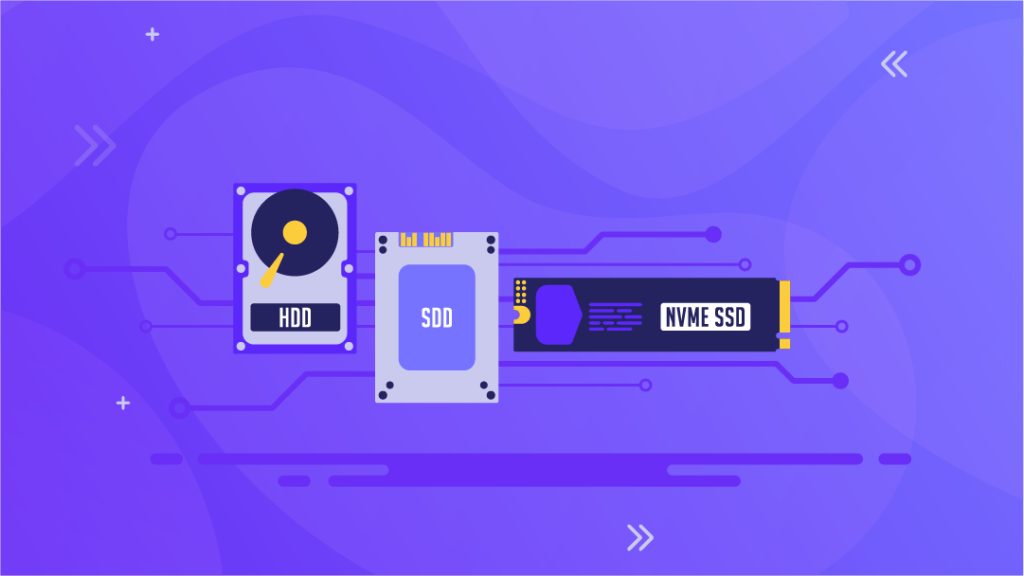With the growing technology, companies are creating tons of data daily. It’s no surprise that traditional storage systems are failing and causing critical security and technical problems. Netizens produce 402.7 GB of new data every single day. The emergence of distributed storage is the proper solution for the arising issue.
In this article, we will cover what distributed storage is, how it works, and the benefits of distributed file storage.
What is a Distributed Storage System?
Software-defined storage that makes data accessible from anywhere and to whomever you want is known as distributed storage. In simpler terms, it distributes the data accessibility to a shared group or community. It is a volume management system that encourages data accessibility in a highly available environment. It is designed with intelligence to respond to cyber-attacks and system failures.
How Does Distributed Storage Work?
Distributed storage splits data across multiple physical servers and, most of the time, more than one data center. It shares the data across mediums so that it forms a cluster of storage units, enhancing performance and making it easily accessible. This storage system challenges the traditional storage system that stores the data at one data center.
Unlike traditional systems, in case of data corruption or data privacy breaches, you don’t lose your data because it replicates it on other nodes. With unprecedented data growth, the traditional storage system miserably failed at keeping the data safe and accessible. The distributed storage system has made it possible for us to keep generating more and more data while this storage system takes care of storing it.
Distributed Storage System Features

The behavior and functions of distributed storage rely entirely on its provider. However, most storage providers offer these four main components.
- Subdivide — This feature allows users to spread their data across nodes, and the partition allows access to data location independently.
- Scalability — This one allows for easy attachment of more storage.
- Resilience — This feature allows data availability on other nodes in case one fails or corrupts.
- Replication — This feature allows replication of the data on multiple nodes to prevent data loss.
Benefits of Distributed Storage
The latest data storage system is highly reliable and provides several significant benefits. Examining each one in detail will help us understand distributed storage better.
Availability and Protection From Failures
The distributed data approach protects from data failures by using erasure coding and replicating your data on several nodes. In unfortunate events, you can retrieve your data from a different node, making it impossible to lose your essential data, encouraging business continuity and uninterrupted work.
The storage system also enhances availability by enabling independent access to your location.
Enhanced Performance
Distributed storage systems can distribute data across multiple nodes, leading to faster data retrieval and better overall performance, especially when dealing with a vast dataset.
This intelligent technology carefully and evenly distributes read/write requests to multiple nodes, preventing a single node from failing due to excess workload. This even distribution significantly contributes to faster overall data retrieval.
Experience the Power of Robust Storage VPS Hosting!
Want to store data without limits? Try Ultahost’s robust Storage VPS Hosting. We offer unmetered traffic and unbeatable performance, and it’s super easy to set up. Store your frequently used massive databases with us today!
Scalability
Unlike traditional storage drives, you can expand its nodes without having to entirely throw your old storage device away just to buy a new storage device with more space. This phenomenal quality can be a lifesaver for businesses that create tons of data every day.
Furthermore, this system provides multiple storage options, allowing you complete control over storing your data. For instance, you can choose to store frequently accessed data on an SSD Dedicated Server, ensuring optimal performance with Solid-State Drives. Less frequently accessed data can be stored on cheaper or more economical HDDs (Hard Disk Drives).
Security to Attacks
The spreading of data onto several servers makes it secure from cyberattacks and data breaches. In the worst-case scenario, even if an attacker manages to enter one of your cells, they can not access all of your data simply because it’s on multiple nodes.
Moreover, nodes possess self-healing properties. If a node is attacked or the data is damaged, the smart system can detect the problem and replicate the healthy data from another node while healing the damaged parts of the node until it reaches optimal health.
Challenges of Distributed Storage
Although there are countless benefits, this complex data-storing solution also comes with several problems or challenges.
Complexity
The complexity of the storage system is an excellent challenge for those who are not proficient with technology. Cloning and managing data on multiple nodes can cause severe complex connectivity and latency issues that only a technician can resolve. It takes several specialized software to ensure proper distributed management.
Synchronization
Managing multiple data copies efficiently across nodes can be challenging. Special protocols and extra care are needed to ensure that all nodes reflect similar data. For instance, this storage system allows two consistency models: strong and eventual consistency. The strong one allows proper synchronization while composing speed, while the eventual one is rapid but may not be able to provide top-notch synchronization.
Examples of a Distributed Storage System
Several world-renowned cloud storage systems and Content Delivery Networks (CDN) work with this technology, listing some of them below:
- Amazon S3: Amazon S3 is a widely used cloud storage service that provides object storage. Each object is uniquely identified by a key and can be stored in any region around the globe.
- Microsoft Azure Blob Storage: This service offers object storage designed to handle vast amounts of unstructured data, such as images, videos, and text files. It supports multiple redundancy options to ensure high availability and resilience against data loss.
- YouTube: As a leading video-sharing platform, YouTube relies on distributed storage to store and stream massive volumes of video content efficiently. By distributing data across multiple servers, YouTube ensures quick access and minimal latency for users worldwide.
- Netflix: Netflix uses a distributed storage system to store and deliver streaming content to its global user base. By leveraging a network of servers across different geographical locations, Netflix can provide high-quality streaming with reduced buffering times.
- Google Drive: Google Drive is a cloud storage service that offers seamless storage and sharing capabilities. It stores data across multiple servers, ensuring data redundancy and accessibility from any location.
- DigitalOcean Spaces: DigitalOcean Spaces is an object storage service that provides scalable and secure storage solutions. It is designed for developers and businesses needing reliable storage for large datasets, backups, and static content.
- HDFS (Hadoop Distributed File System): HDFS is designed to run on clusters of commodity hardware. It is commonly used for storing large datasets for big data analytics, providing high throughput access to application data and fault tolerance.
- Ceph: Ceph is a highly scalable and fault-tolerant distributed storage system. It supports object, block, and file storage, making it versatile for various use cases, including cloud infrastructure, big data storage, and archival solutions.
Cloud Computing vs. Distributed Cloud
Oftentimes, people confuse distributed cloud storage with cloud computing. However, they differ from each other, and both possess unique characteristics and benefits. Cloud computing lets you rent a high-end computer from far away (which gives it the name “cloud”) using remote access. Simply put, it’s a ready-made system that you can explore as you pay.
Unlike cloud computing, it is not a ready-made system; you build and grow it with your data needs. Furthermore, it works like a hybrid model, where you can store data on nodes from all over the world. Although harder to manage, it provides more data security and flexibility in storing your data.
Conclusion
Distributed storage systems offer a robust solution to traditional storage’s limitations, providing enhanced data accessibility, reliability, and scalability. By replicating data across multiple nodes, these systems ensure data integrity and protection against failures, making them essential for managing the ever-growing volume of data in today’s digital world. Explore the power of distributed storage to keep your data secure, accessible, and ready for future demands.
Take complete control over your servers. Ultahost’s unmanaged VPS hosting offers complete control over virtual private servers. Stop relying on third parties to host your servers and take control.
FAQ
What is a distributed storage system?
Distributed storage system is a software-defined system that spreads data across multiple servers, providing amazing accessibility from anywhere and to anyone you want.
How does distributed storage protect data?
Unlike traditional storage systems, it replicates data across multiple nodes. In case of server failure, a corrupted node can retrieve data from a healthy node, preventing data loss.
How does distributed storage improve performance?
By evenly distributing read/write requests across nodes, distributed storage helps improve performance and makes it easy and efficient to store vast amounts of data.
Is distributed storage scalable?
Of course, adding more nodes to the existing cluster is easier and stress-free. You can scale up your data needs as soon as you want.
How does distributed storage provide safety from cyberattacks?
Intelligent data storage can observe when an intruder tries to break in and can prevent attackers from entering other nodes and accessing all your data.








